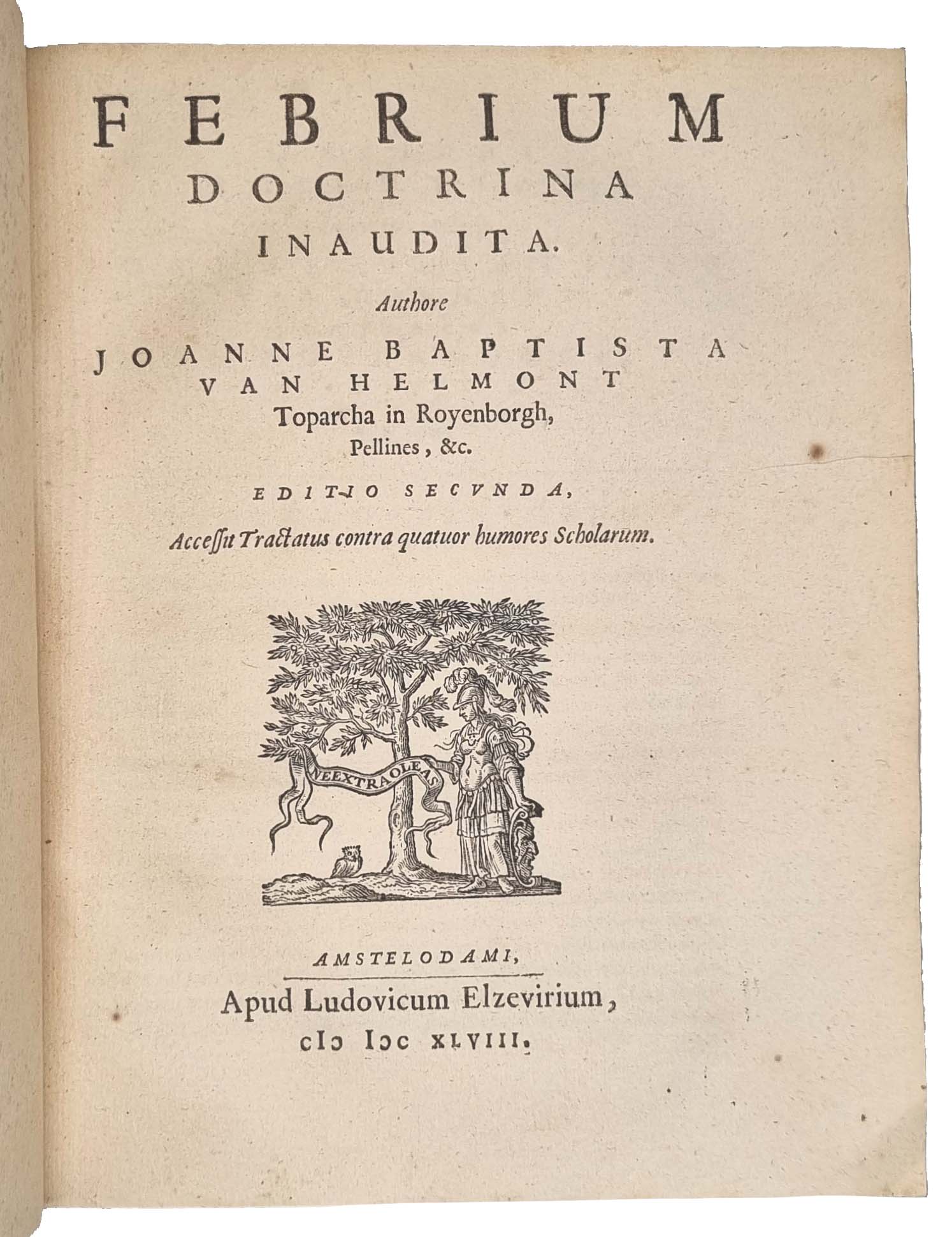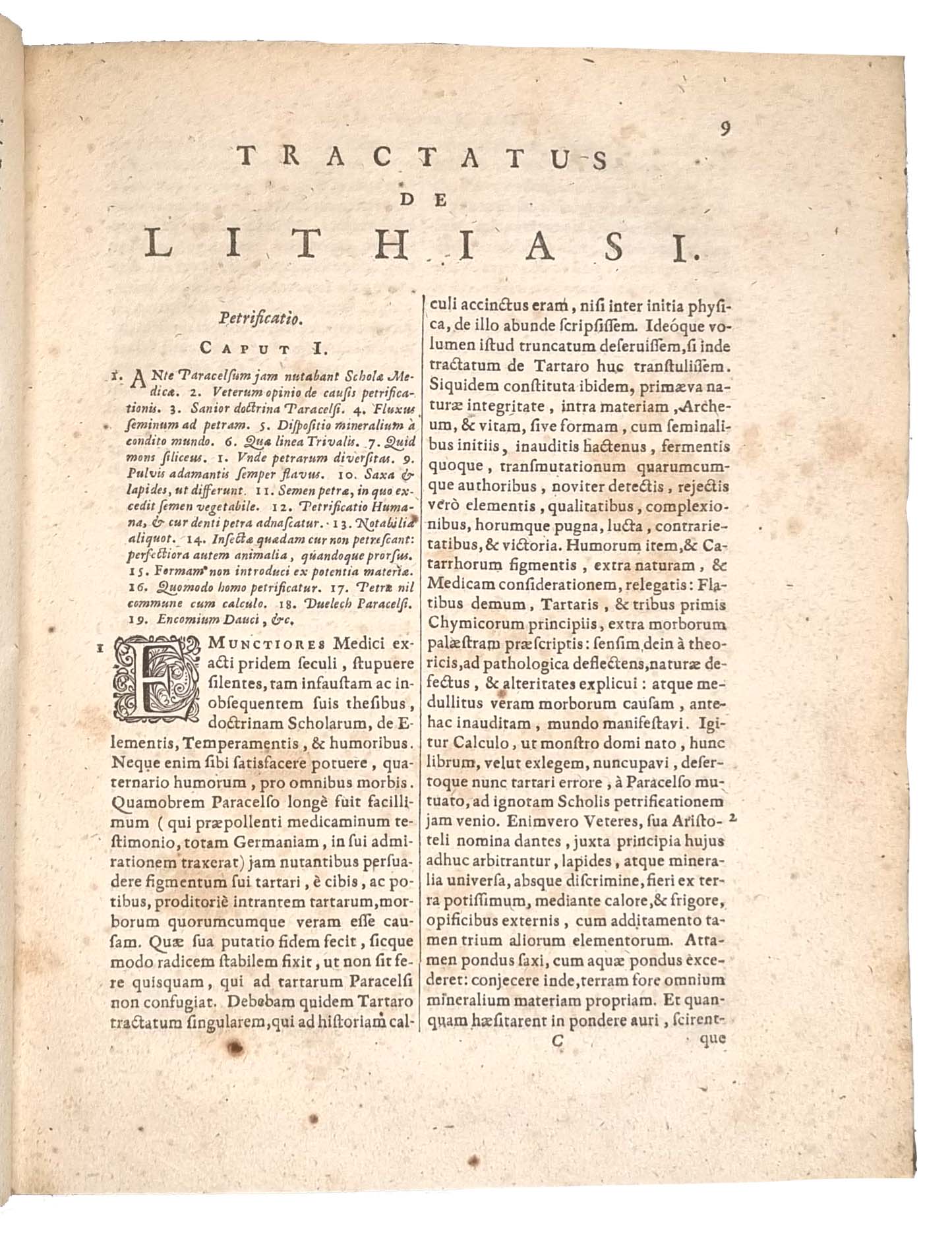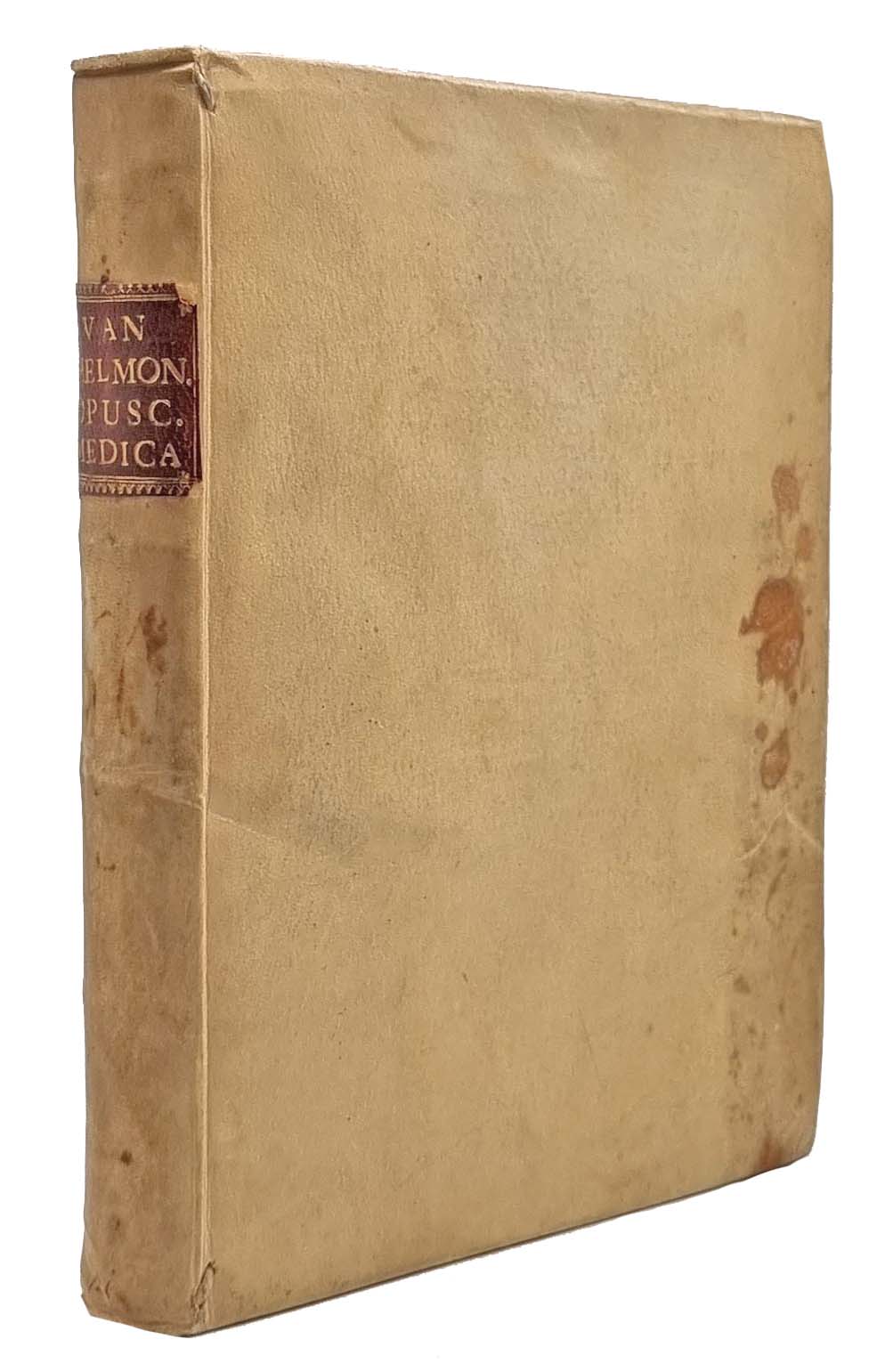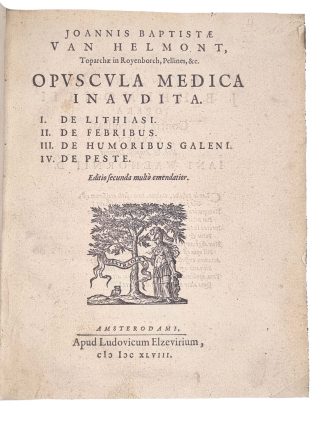HELMONT, Johannes Baptista van.
Opuscula medica inaudita
Amsterdam, apud Lowijs III Elzevier, 1648£1,850.00
4to, three parts in one, separate t-ps, pp. (iv) 110 (ii); pp. 115 (i); 88. Roman and Italic letter, double column, printer’s device to t-ps, woodcut floriated initials, charming endpieces with cornucopiae, foliage, masks and an open book. Age yellowing, intermittent light browning, slight marginal foxing, small tear to upper outer blank corner of first t-p, spots or marks to a few ll. A good, well-margined copy, crisp and clean, in contemporary vellum over boards, a few light ink stains to upper cover, bookplate of the Italian physician and pathologist Valeriano Luigi Brera (1772-1840) to front pastedown.
Second edition, corrected and published after the author’s death by his son, of this remarkable collection of four chemical and medical treatises. In this work, first published in 1644, the author presented a new cure for stones and the results of numerous chemical experiments. This second edition was also issued in conjunction with the first edition of Van Helmont’s ‘Ortus medicinae’, and the two are sometimes found together.
First in the collection is ‘De lithiasis’, a treatise on urinary calculi which has been defined by the important physician Boerhaave as ‘incomparable, and the best’. The author discusses – reporting the results of a series of experiments – how solid concretions are formed in nature. Notably, Helmont also announces for the first time his ‘Ludus’, a new remedy for the ‘stone disease’ and how to prepare it (the author modified a recipe of Paracelsus adding more ingredients); ‘Ludus’ was described as mineral with the extraordinary ability to dissolve any concretion in the human body. ‘De Febribus’ (first ed. 1642) is a shorter work on fevers and their nature, interestingly containing an alternative view to Galen and ascribing fever to the influence of the ‘archeus’, the ‘vital spirit’ regulating the internal heat of the body. ‘De humoribus Galeni’, third in the collection, contains a scathing review of Galen’s humoral theory. Finally, ‘De peste’ is a treatise on the plague; as this disease was still a major threat in Europe, this is one of Van Helmont’s most translated and popular works. In the introduction, the author mentions the death of two sons due to a recent outbreak in Brussels. The author’s advice in this treatise is to not be afraid of the plague, as fear can influence one person’s imagination, ultimately affecting the ‘archeus’ and generating an actual disease. In the second section, the author proposes various cures, e.g. ‘sweat potions’, but also powerful words, herbs and stones.
“A Belgian mystic, Helmont [1580-1644] was the most prominent chemist of the first half of the seventeenth century. Originally an alchemist and a follower of Paracelsus in that his outlook was universal, he himself marks the transition from alchemy to the science of chemistry in the modern sense. (…) Helmont established his name as one of the founders of biochemistry, although some authorities believe that he is perhaps overrated because of his vacillations between mysticism and science. In any event, his discovery of digestive juices in the stomach and intestine, and especially his first use of the specific gravity of urine for diagnostic purposes, mark him as a man of no insignificant importance in the history of medicine.” (Heirs of Hippocrates). Remarkably, Helmont was the first to apply the term ‘gas’ to aeriform fluids, and the first to take the melting point of ice and boiling point of water as standards for measuring temperature.
USTC 1014171; STCN 089405099; Bibliotheca Osleriana 2932; Heirs of Hippocrates 253; Ferguson II, p. 381; Krivatsy 5442. See Brunet III, p. 91; Graesse III, p. 238; Garrison-Morton 665; Bibliotheca Chemica 1858. Not in BM STC Netherlands C17, Caillet or Duveen.In stock







